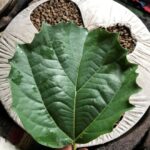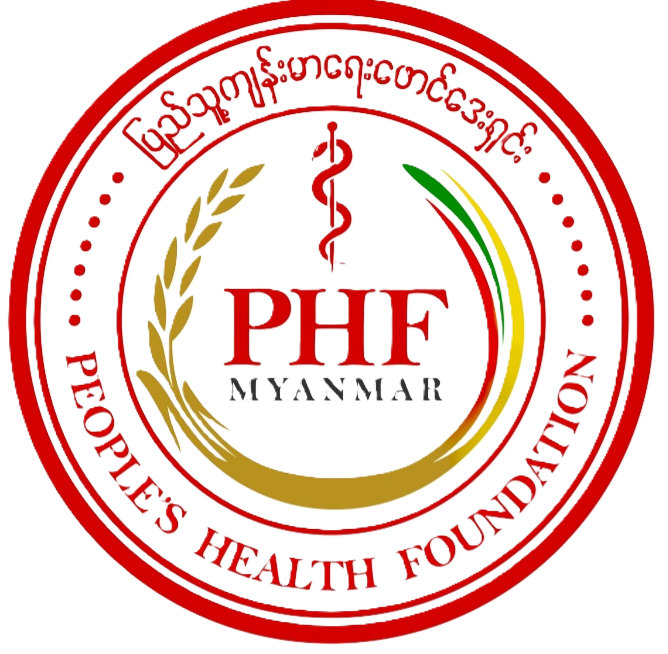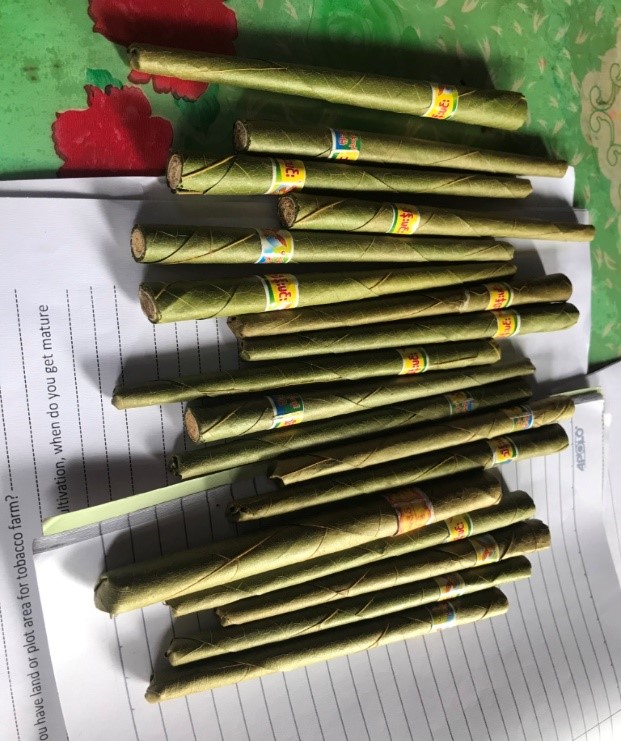Than Sein, Htay Lwin, Wai Phyo Kyaw and Aung Toe Wai, People’s Health Foundation
In early 2000, few community surveys showed that around 60-80% of tobacco smokers used the local version of cigarettes called cheroot or Hsey Pawt Leik. After 2005, the pattern of tobacco use has changed from smoking traditional Hsey Pawt Leik to cigarettes as they are easily available and cheaper. Production data, as per Myanmar Statistical Year Book 2018, showed that there was a marked decrease in Hsey Pawt Leik (cheroot) production from around five billion sticks in mid-1990s to about two billion sticks by 2015. Around the same period, the cigarette production has increased from 2.5 billion sticks to almost 10 billion sticks by 2017-18.[i] Present day data on proportionate consumption of cigarette vs. Hsay Pawt Leik among adult population is not available.
Cheroot or Hsey Pawt Leik is a smoking tobacco product, very popular in Myanmar. It is prepared by wrapping and rolling the mixture of processed tobacco with flavours and other ingredients, in local leaf called thanatphet. In some areas of Myanmar, instead of thanatphet leaves, other leaves from corn, coconut, betel-nut, or bamboo trees, or even old newspaper sheets, are used as wrappers. This smoking product may have been introduced in the 14-15th centuries and still common in both urban and rural areas.
There are very few studies done on Hsey Pawt Leik and its related product, thanatphet leaf. People’s Health Foundation has conducted a desk-based case study during 2020, and a field study on current situation of thanatphet cultivation and production in Myanmar in July-September 2020, with a view to know the general situation of thanatphet production, since it relates to the ultimate production of Hsey Pawt Leik, major smoking tobacco product in Myanmar.
Among all Regions and States in Myanmar, Taung-Gyi and Loilem Districts, and Pa’O Self-Administrative Area of the Southern Shan State are known to be the largest thanaphet growers/producers. Annual production of thanatphet leaves in Myanmar is around 31,000 metric tons a year, of which around 70-80% of the product came from these areas.[i] According to the Ministry of Agriculture, the planted area of thanatphet in Southern Shan State was 54,000 acres in 2009-2010, accounting for 98 percent of the total Myanmar thanatphet crop.

PHF team, consisting of a Medical Officer and two Health Assistants[ii], was sent to Saung-Phoe Thayetpin Village of Naung-Ke Village Tract, and Kyauk-ta-lone Town of Kyauk-ta-lone Sub-Township of Taung-Gyi Township in Southern Shan State, to have a case study and quick review of thanaphet cultivation and industry, in August 2020. Site visits and observations to thanaphet cultivation and industry, and face-to-face interviews of selected producers were made from 13-16 August 2020. The case study team had visited 2 places – (1) Saung-Phoe Thayetpin Village of Naung-Ke Village Tract, and (2) Kyauk-ta-lone Town of Kyauk-ta-lone Sub-Township, both under Taung-Gyi Township in the Southern Shan State, where thanaphet is grown abundantly. The team had made face-to-face interviews with farmers and labourers, and also made observation of thanaphet fields, to solicit the way thanaphet is grown and processed. In addition, the team had visited one whole sale distributor of thanaphet at Taung-gyi Town, the capital of Shan State, and made face-to-face interview with whole sale owner, including observations on thanaphet packing, storage and distribution.
PHF Team also reviewed the literature and developed possible policy actions in relation to thanaphet cultivation and industry in Myanmar. PHF Study Report is now available.


